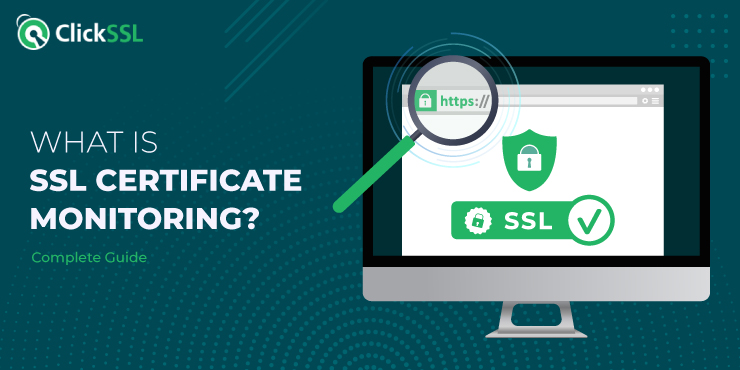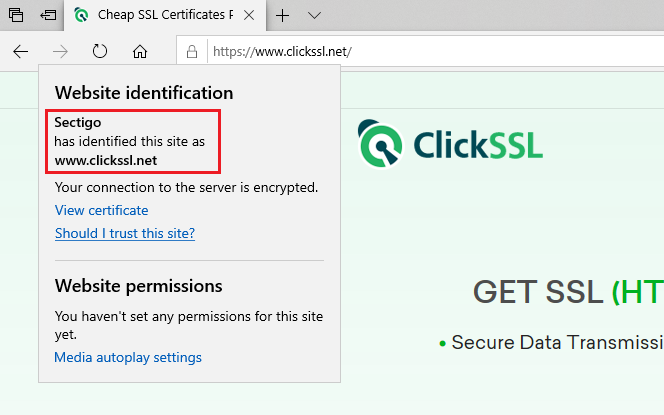SSL certificate monitoring ensures website reliability and accessibility by considering SSL certificate validity.
SSL certificates help your websites stay secure while connecting with browsers. However, if the same certificate has expired, your website will have a massive impact on traffic, search engine rankings, and overall domain authority.
So, how do you ensure your SSL certificates don’t expire?
Every certificate has its expiry date so you can’t prevent expiry. However, if you can track SSL certificates, timely renewals can help improve the security and domain authority. This is where SSL certificate monitoring can help you manage, configure, and track all the certificates within your organization.
The article will focus on SSL certificate monitoring, its benefits, and what an SSL incident is.
What are SSL Certificates?
Secure Sockets Layer (SSL) certificates are digital certificates that help you authenticate a website identity and secure browser connections through encryptions. SSL certificates help businesses build a secure environment for users to interact with websites. For example, you can access the browser to browse a website.
The browser will try to connect with the server and request the necessary data. However, before establishing the connection, the server must provide an SSL certificate, which helps the browser determine whether the source is secure. If the data source is insecure, it will deny connection with the website server.
So, if your website does not have a valid certificate, the browser will warn the users about it through an error message. This could dent the user’s trust in your website. You can buy SSL certificates from leading certificate authorities (CAs) like Comodo, DigiCert, etc. These CAs provide different types of certificates for specific periods.
For example, using a wildcard SSL certificate, you can secure multiple subdomains using a wildcard certificate. Installing these certificates can help you secure your website from cyberattacks.
This is why businesses are now focusing on SSL certifications for improved security. However, what becomes challenging for most companies is SSL certificate monitoring.
What is SSL Certificate Monitoring?
SSL certificate monitoring is a process of tracking, managing, and configuring certificates to ensure continuous website protection.
Most organizations have multiple domains and subdomains. So, managing these certificates, tracking renewal data, and ensuring configurations meet system requirements.
SSL certificate monitoring involves setting up instant alerts on system behavior and any changes that can cause problems. Alerts also allow organizations to track whether a certificate is misconfigured or up for renewal. This is also crucial for inventory management of all your SSL certificates.
Why is SSL Certificate Monitoring Important?
SSL certificate monitoring is critical for improving the security of your websites and applications. It allows you to ensure all your certificates are active and secure data from cyberattacks. You can track each certificate due for renewal and ensure no expired certificates exist. This is especially important to ensure users don’t lose trust in your brand.
Most users are very particular about which brand they want to interact with, and if your brand does not provide data security, it can impact conversions. So, you need to ensure customers’ data is secure, which is where SSL certificates help.
Monitoring whether these certificates are configured correctly and are active is crucial for user trust and search engine rankings. For example, a search engine optimization requirement for Google is HTTPS or secure website domains. So, it becomes crucial for businesses to ensure SSL certificate monitoring and enforce HTTPS for their websites.
Here are some other benefits of SSL certificate monitoring,
- Monitoring SSL certificate expiry and status allows you to renew them quickly, so there are no security gaps.
- If an SSL certificate expires or is misconfigured, browsers send an error message to users, which can impact your web traffic.
- Expired SSL certificates also impact the organic traffic for your website, leading to lower conversions.
How does SSL Certificate Monitoring Work?
SSL certificate monitoring process involves many stages, beginning with checking the validity of a certificate, confirming expiry data, checking for errors, and tracking renewals. You can use SSL monitoring tools, which help you. Keep track of current certificates, issuers, and issues with configurations.
The process begins by sending an automated HTTP request. This request is sent to the website URL at a specific frequency to determine the validity of the SSL certificate. The frequency of sending HTTP GET requests depends on how intensely you want to monitor SSL certificates.
For example, business websites often send HTTP requests every thirty seconds, ensuring security for their operations. On the contrary, small businesses and bloggers may send requests to check SSL certificate validity for up to 10 minutes or more.
In response, if the website sends a signal for a valid certificate, you don’t need to take any further action. However, the system identifies this instance as an SSL incident if an invalid certificate is returned in response.
What is an SSL Certificate Incident?
As you know by now, if an invalid certificate gets detected, the system will send an error response, also known as the SSL certificate incident. There are many reasons for such an incident, including expired certificates, misconfigurations, mismatch of the server name, or issues within the certificate chain of trust.
If an SSL certificate incident occurs, a monitoring tool or system starts alerting you about the error. It also shows the expiration date. SSL certificate monitoring also has a pre-defined threshold, and an alert is triggered if any certificate crosses it for the expiration date.
Once an SSL incident occurs, the process of “incident alerting” begins, which provides real-time notification to the person in charge. Mostly, these alerts are sent through calls, SMS, and other messaging tools like Slack or MS Teams.
Steps to be taken after the SSL incident
Once you receive the message of the incident, it needs acknowledgment within a specified time, which is ideally three minutes. The entire team is alerted about the incident. However, the best practice is to have a single person on-call to solve any incident soon.
After acknowledgment, the escalation process is paused so teams have time to resolve the incident. The time the alert message takes to reach the team and be acknowledged is known as Time to acknowledge (TTA), which should be pre-defined.
However, the most vital metric for SSL certificate monitoring is the Mean Time to Acknowledge (MTTA). It is the average of TTA from different incidents and you need to ensure it stays minimum for maximum security.
Benefits of SSL Certificate Monitoring
SSL certificate monitoring comes with many benefits if you are an enterprise with several applications and systems across the organization. Some key advantages of monitoring SSL certificates include preventing incidents, fixing HTTPS connection issues, and data protection.
Preventing SSL Incidents
SSL certificate monitoring ensures that your certificates are not expired and actively secure the websites. This helps in avoiding SSL incidents, which can impact website security. It also allows businesses to quickly resolve issues and maintain security for their applications.
This proactive approach can help your business overcome issues of cybersecurity and data loss that can occur due to SSL incidents.
User Data Protection
Businesses need to comply with different data regulations like GDPR, PCI DSS, and HIPAA. These regulations make sure that user data is not at risk and that businesses have security measures in place to avoid any incident.
SSL certificate monitoring makes sure that businesses secure user data through active encryptions. It reduces the chances of inactive SSL certificates due to expiry and improves user data protection.
Fixing HTTPS Connection Issues
If an SSL certificate expires the benefits of an HTTPS connection are lost, impacting not just data protection but also domain authority. HTTPS connections are a key aspect that search engines consider for indexing and improving your website’s domain authority.
So, if your website suffers from SSL incidents frequently, it can lead to lower domain authority, impacting the traffic, search engine rankings, and conversions. SSL certificate monitoring helps you reduce incidents and enforce HTTPS.
Key takeaway for SSL Certificate Monitoring
With the changing landscape of cybersecurity and the increasing need for HTTPS-based connections, SSL certificate monitoring holds the key to your business success. For example, if your SSL certificate expires or is misconfigured, it can lead to several issues like data loss, lack of user trust, and penalties from search engines like Google.
So, the best practice is to leverage SSL certificate monitoring and ensure optimal security for your website. It offers several benefits and requires a mechanism of instant alerting if there is an SSL incident. How to design the mechanism and frequency of messages in case of SSL certificate expires or invalid certificate detection depends on specific business requirements.
Related Post:


